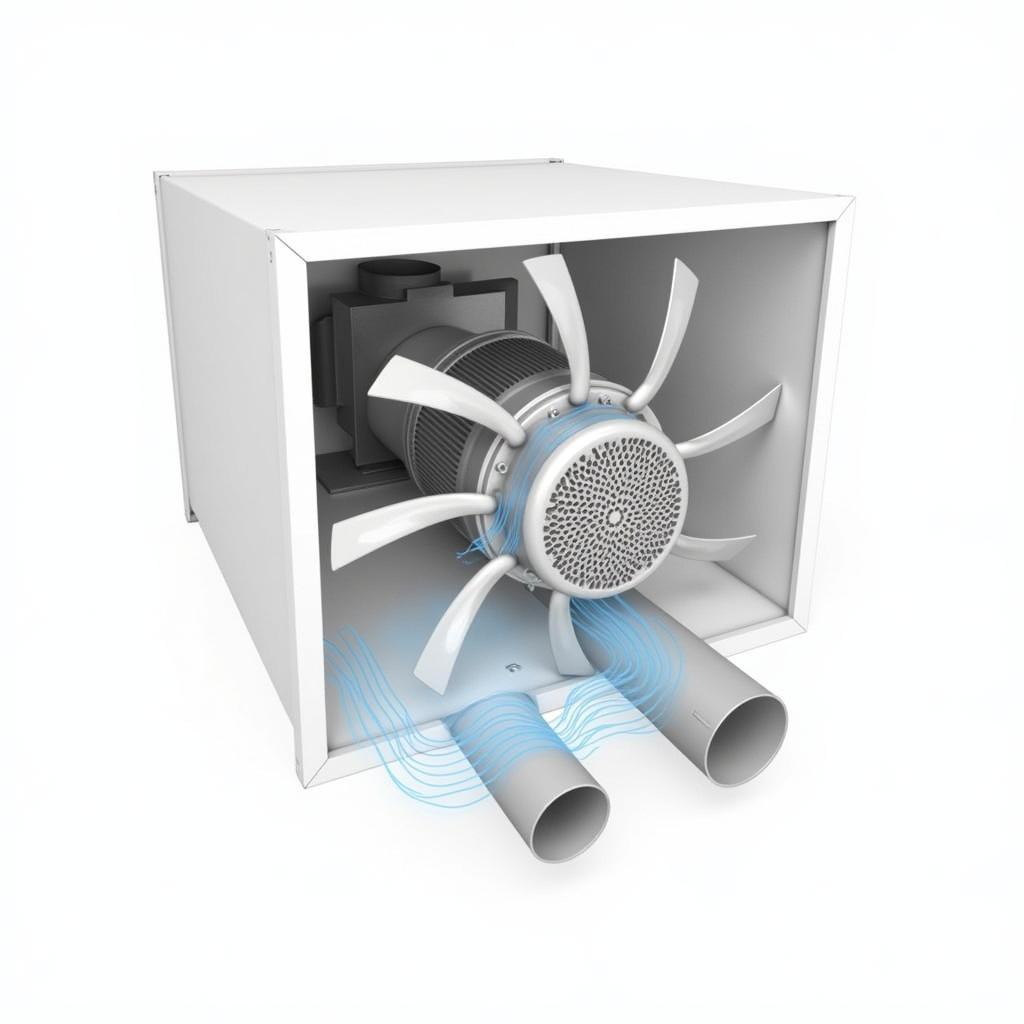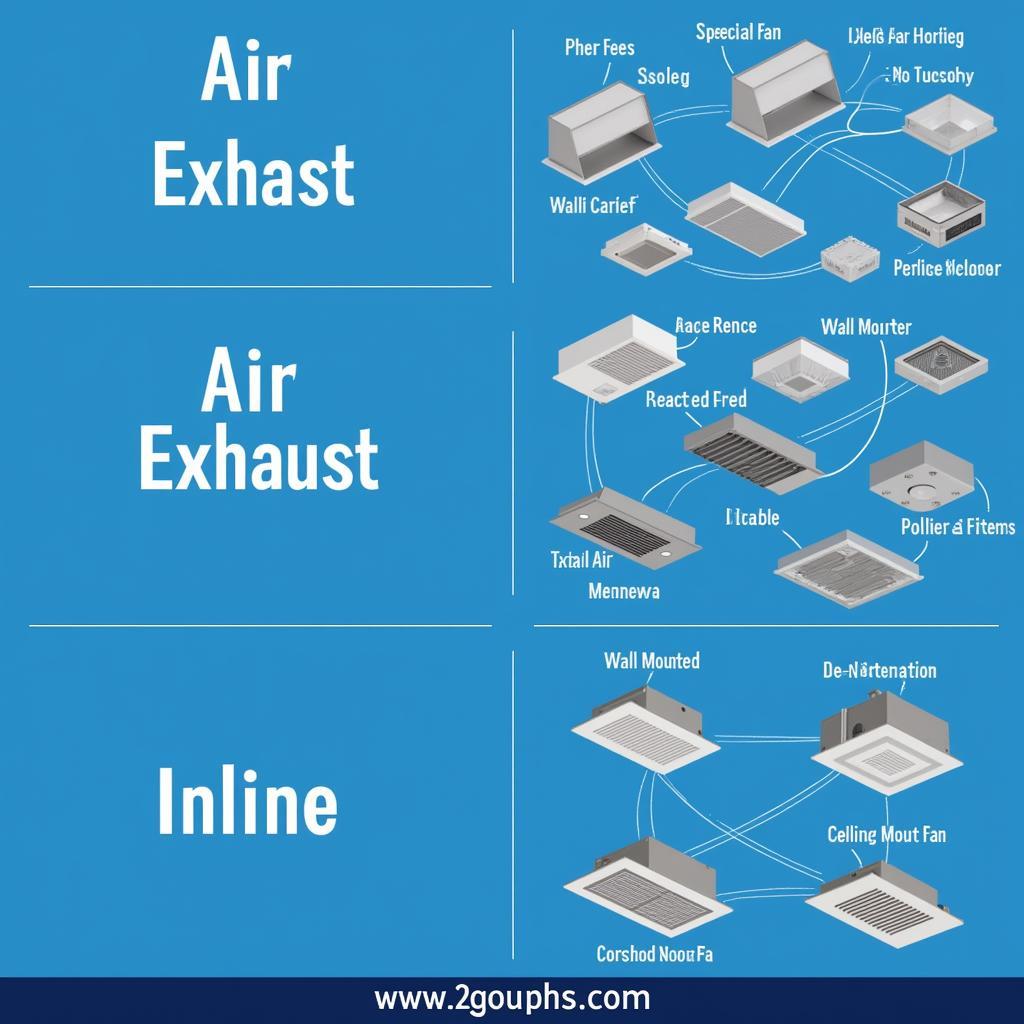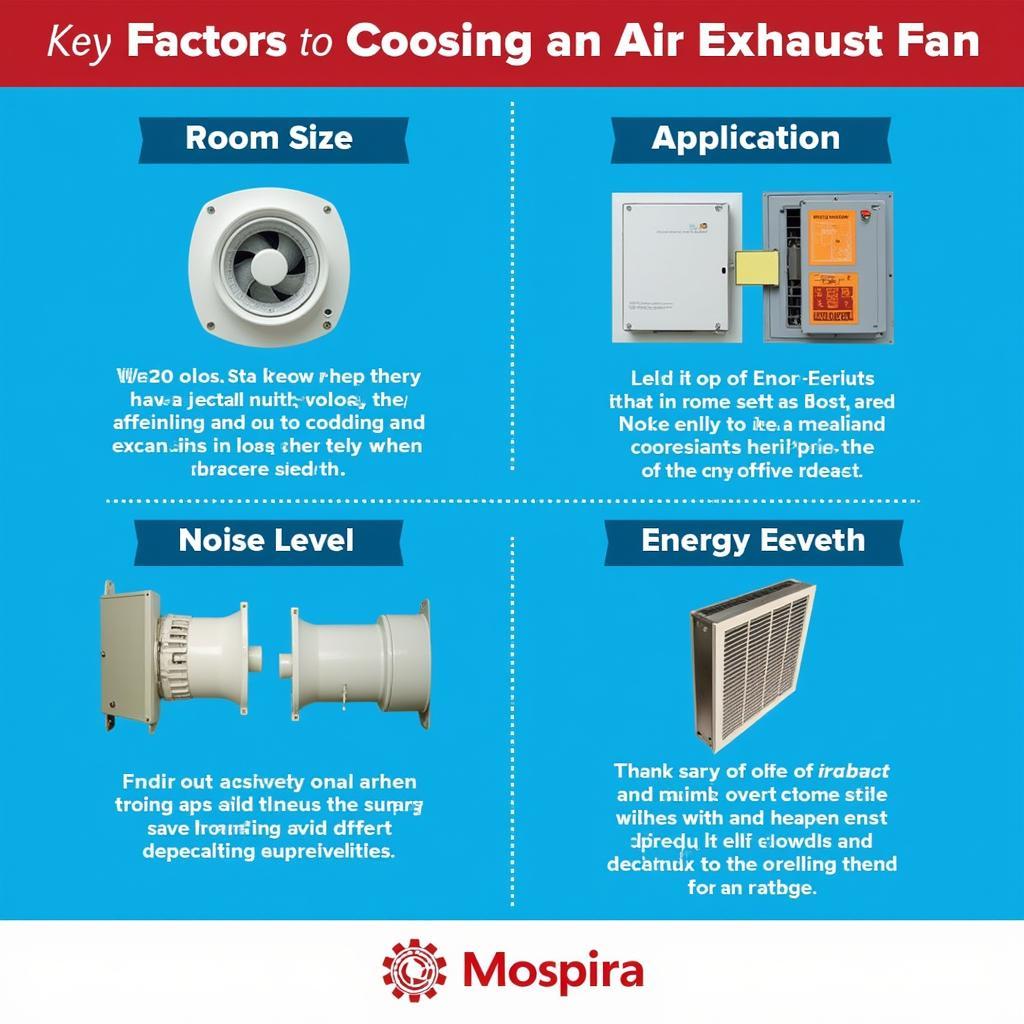Air Exhaust Fans are essential components of many residential, commercial, and industrial spaces. They work by pulling out stale, humid, and contaminated air, replacing it with fresh air from outside. This continuous air exchange creates a healthier and more comfortable environment for occupants.
How Do Air Exhaust Fans Work?
Air exhaust fans operate on a simple yet effective principle. The fan blades, powered by an electric motor, rotate to create a pressure difference. This pressure difference forces stale air out of the building through a system of ducts and vents. As the stale air exits, fresh air is drawn in through open windows, doors, or dedicated intake vents. This constant circulation helps maintain optimal air quality and temperature.
 Air Exhaust Fan Mechanism
Air Exhaust Fan Mechanism
Types of Air Exhaust Fans
There are various types of air exhaust fans designed for specific purposes and locations:
Wall-Mounted Exhaust Fans
As their name suggests, these fans are installed on exterior walls and are commonly found in bathrooms, kitchens, and laundry rooms. They are ideal for removing moisture, odors, and airborne particles directly from the source.
Ceiling-Mounted Exhaust Fans
Installed in the ceiling, these fans are suitable for larger rooms or open spaces. They offer a discreet ventilation solution and are often connected to ductwork to exhaust air outside.
Inline Exhaust Fans
These fans are installed within the ductwork itself, typically in attics or crawl spaces. They provide powerful and quiet ventilation for the entire building.
 Different Types of Air Exhaust Fans
Different Types of Air Exhaust Fans
Benefits of Using Air Exhaust Fans
The advantages of incorporating air exhaust fans into your building are numerous:
- Improved Indoor Air Quality: By removing pollutants, allergens, and excess humidity, exhaust fans create a healthier living or working environment.
- Moisture Control: Excess moisture can lead to mold and mildew growth. Exhaust fans effectively remove moisture, preventing these issues.
- Odor Elimination: Cooking odors, smoke, and other unpleasant smells are quickly expelled, keeping the air fresh.
- Temperature Regulation: By removing hot, stagnant air, exhaust fans can help cool down a room or building, reducing reliance on air conditioning.
Choosing the Right Air Exhaust Fan
Selecting the right air exhaust fan depends on several factors:
- Room Size: Larger rooms require more powerful fans with higher CFM (cubic feet per minute) ratings.
- Application: Different rooms have different ventilation needs. For instance, bathrooms need fans with high moisture removal capabilities.
- Noise Level: Consider the fan’s sone rating, which measures noise output. Lower sone ratings indicate quieter operation.
- Energy Efficiency: Look for fans with energy-saving features to minimize electricity consumption.
 Choosing the Right Air Exhaust Fan
Choosing the Right Air Exhaust Fan
Conclusion
Air exhaust fans are crucial for maintaining a healthy, comfortable, and safe indoor environment. By understanding the different types, benefits, and selection criteria, you can choose the most effective fan for your needs. Proper ventilation through air exhaust fans not only enhances indoor air quality but also protects your building from potential moisture damage, ensuring a fresh and welcoming atmosphere for years to come.


